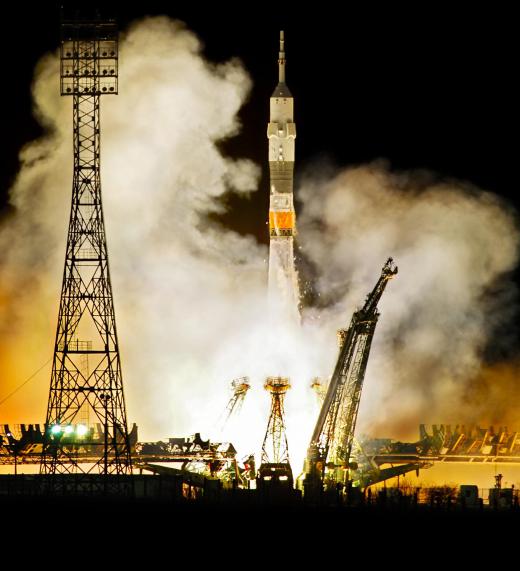What is Random Vibration?
Random vibration is any vibration that does not follow a pattern. It is present to some extent in a wide variety of mechanical and electrical systems. Though random vibration cannot be predicted exactly, statistics can generate useful information for vibration environments. Cars on the highway and rockets launching are two situations that can face intense random vibration. Engineers use statistical data to simulate this vibration in the laboratory.
Certain probabilities of random vibration behavior often can be predicted. For example, if a car on the highway is randomly vibrating in the vertical direction, its future positions above the ground cannot be known exactly. The probability that the car will be above a certain height, however, can be predicted. This is possible because random behavior follows a normal distribution or “bell curve.” The behavior of such a system can be analyzed with the tools of statistics.

Statistical analysis can give information like the average value of many measurements. In the car example, the average height off the ground may be something like 1 foot (30.5 cm). In a sufficiently large sample of measurements, statistics can also give standard deviations. One standard deviation is the distance from the mean value that contains 68.2% of all data points. For the car vibration test, 68.2% of height measurements may be within 1 inch (2.54 cm) of the mean height.
When the standard deviation of test data has been calculated, engineers can use this to design products. The random vibration conditions on many different highways are similar, so the statistical data is fairly reliable. Engineers use this data to replicate vibration conditions in a laboratory, where it is easier to run tests on different product designs.
Another situation that experiences random vibration is a rocket launch. Rocket payloads feel an initial spike in vibration when the engine ignites. A few seconds later, vibrations are primarily from the motor burning. After the rocket surpasses the speed of sound, vibration is mainly from shock waves and aerodynamic effects on the vehicle. Later, some vibration can result from smaller thrusters that correct the rocket’s orientation.
Like with the car, rockets and their payloads must be designed to survive random vibration. Engineers need to know the statistical data of the vibration so they can reproduce these conditions in the laboratory. It would be impractical to launch a test rocket every time a new payload design needed to be tested. Rather, engineers put sensors on the rockets that are launched, and then use this data later.
AS FEATURED ON:
AS FEATURED ON:











Discussion Comments
@hamje32 - While cars and rockets are mentioned in the article, I would assume that these principles apply to airplanes as well.
There is nothing like flying in an airplane through a path of disturbances that shake the plane and make the wings rattle. You wonder in those moments if the plane can really withstand all of the random vibrations that it must endure.
I realize that they use wind tunnels to anticipate the effect of these vibrations but still, now and then you experience that jolt that makes it feel like the airplane is about to fall apart. Perhaps I am just too afraid of flying.
@allenJo - I think they would still follow the bell curve pattern. The key to accurate vibration analysis I believe is to have a large statistical sample to do your measurements.
So in the example that you cite, you would need to run a lot of tests with the off road SUV vehicle. This would give you a baseline for measurements and a decent statistical sample, and I believe the results will still follow the bell shape pattern.
You can’t compare the off road SUV with the car driven on the highway in my opinion; it’s apples and oranges.
The article talks about random vibration testing for a car on the highway. What about a car that is traveling in conditions that are more or less random?
For example, just consider an off road SUV traveling in dirt roads; these conditions would cause a lot of random vibrations which would not mimic the spikes that you might see in a highway driven vehicle.
Would the statistical patterns be the same?
Post your comments